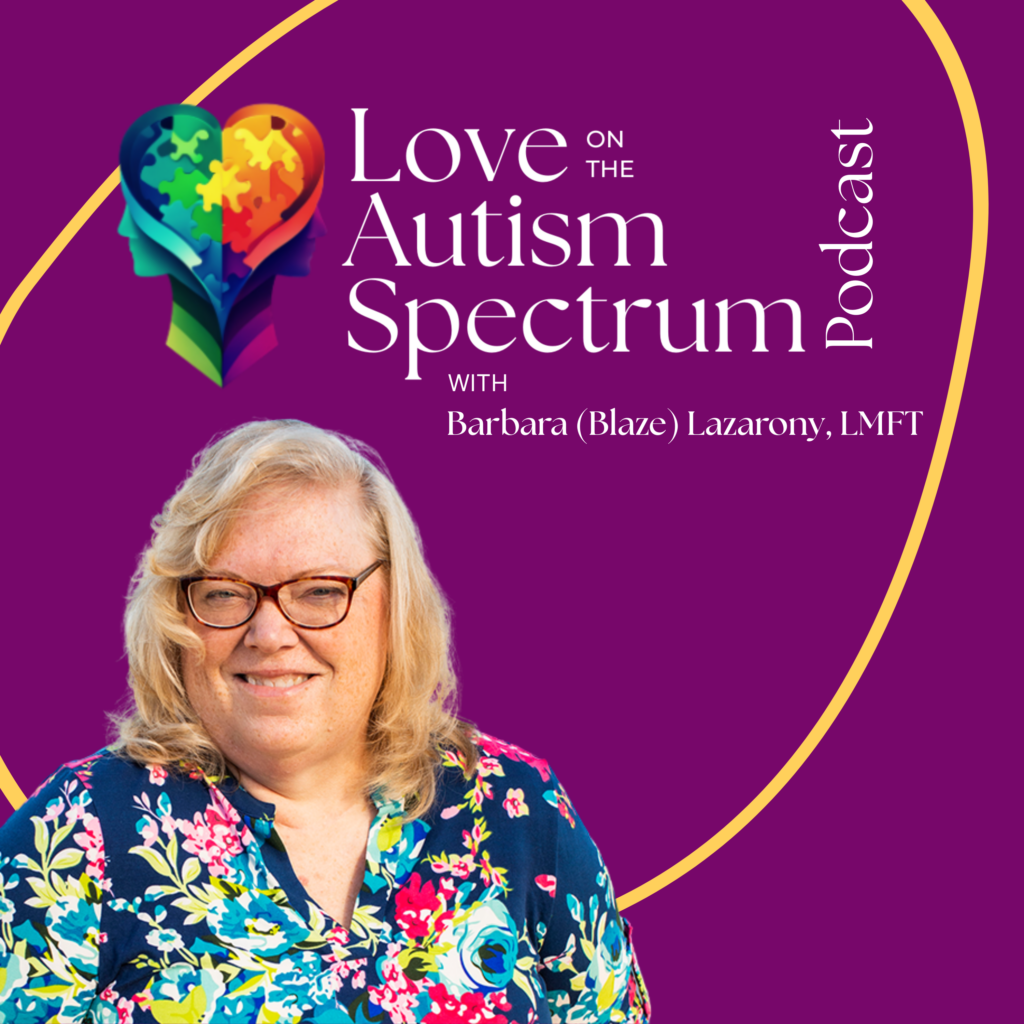Imagine constantly trying to adapt to a world that doesn’t understand you. For many autistic adults, this is a daily reality, often resulting in a debilitating condition known as autistic burnout. Autistic children also face significant challenges with self-care and burnout, with struggles frequently manifesting in increased sensory sensitivities and emotional meltdowns.
In this blog post, we’ll explore the complexities of autistic burnout symptoms and how to recognize them. We’ll also explore strategies for preventing and managing autistic burnout, among other things, and the crucial role society plays in accommodating the unique needs of autistic individuals.
Key Takeaways
- Autistic burnout is a serious chronic condition caused by life stress, mismatched expectations, and inadequate support systems.
- Recognizing symptoms such as exhaustion, sensory overload,d and decline in cognitive skills can help individuals seek support.
- Strategies for preventing/managing autistic burnout include establishing boundaries, self-care, and building a supportive network.
The Reality of Autistic Burnout
Many people often ask to define autistic burnout, which is a chronic condition experienced by autistic individuals, including an autistic person who has experienced autistic burnout due to the challenges of navigating a neurotypical world. Experiencing autistic burnout results from a combination of life stressors and lack of support. Often characterized by pervasive, long-term exhaustion, loss of function, and reduced tolerance to stimulus, an autistic person with burnout can have a significant impact individual’sdual’s life and mental health. It is crucial to provide a supportive environment for autistic children to help mitigate issues of exhaustion and foster better self-care practices.
The Struggle in a Neurotypical World
When autistic individuals attempt to conceal their traits and conform to societal norms, it can lead to immense exhaustion, fatigue, and energy depletion. This strain can be particularly overwhelming for autistic children, leading to increased sensory sensitivities and emotional meltdowns. This strain can make them more susceptible to burnout, as they continuously mask their autistic traits and disregard their own needs to fit into a neurotypical world.
Unmasking can prevent burnout, allowing individuals to save energy and express themselves more authentically. However, the responsibility doesn’t solely lie with the autistic individual, as society plays a crucial role in accommodating their needs and promoting the autism spectrum of acceptance.
Causes of Autistic Burnout
Potential causes of autistic burnout include chronic life stress, mismatched expectations, and inadequate support systems, leading to physical and mental fatigue. For an autistic child, these stressors can be particularly overwhelming, leading to increased sensory sensitivities and emotional meltdowns. Chronic stress is a condition of sustained mental and emotional tension caused by challenging circumstances, which can sometimes lead to a mental health crisis.
Inadequate support systems, such as lack of understanding or acceptance from family and friends, limited access to resources, or insufficient comprehension oindividual’sdual’s needs, can affect many autistic adults. Autistic burnout differs from other forms of burnout in that it is a consequence of continuously concealing autistic traits, disregarding autistic requirements, and being denied accommodation and comprehension in neurotypical spaces.
Recognizing the Symptoms of Autistic Burnout
Early intervention and support hinge upon the timely recognition of autistic burnout symptoms. Symptoms preventing autistic burnout can include:
- Chronic exhaustion
- Loss of skills
- Reduced tolerance to stimuli
- Feeling like one can no longer cope
- Physical exhaustion
- Depressive symptoms
- Difficulty with skills such as speech and language and executive function
- Heightened sensory sensitivity
Comprehending these five signs of autistic burnout empowers individuals and their support networks to proactively alleviate the burden of autistic burnout and devise prevention and management strategies.
Chronic Exhaustion and Fatigue
Chronic exhaustion and extreme fatigue are common symptoms of autistic burnout, significantly impacting daily functioning, relationships, and mental health. They can lead to:
- A lack of interest and difficulty engaging in special interests
- Difficulty in maintaining relationships
- Difficulty with simple tasks such as brushing one’s teeth
- Challenges with masking
Awareness of these symptoms enables individuals to manage their energy levels aptly and solicit support when necessary.
Sensory Overload and Heightened Sensitivities
Sensory overload and heightened sensitivities during autistic burnout can lead to meltdowns, shutdowns, and increased difficulty managing daily life due to overwhelming sensory stimuli. Anxiety, irritability, restlessness, difficulty concentrating, and physical unease are common indications of sensory overload, which an overwhelming amount of sensory input can trigger.
Managing sensory overload and heightened sensitivities during autistic burnout requires establishing healthy boundaries, practicing self-care, and seeking mental health support.
Decline in Cognitive and Life Skills
Autistic burnout can lead to a decrease in cognitive and life skills, making activities that necessitate executive functioning skills and self-care increasingly challenging. This decline can manifest in difficulty with memory, language, and other cognitive abilities, as well as challenges in managing basic self-care tasks and an increase in repetitive behaviors.
Identifying these symptoms and seeking suitable support can assist individuals in regaining and maintaining their skills and well-being.
Experiencing Autistic Burnout as an Autistic Adult
Experiencing autistic burnout as an autistic adult can be a challenging and debilitating experience. Autistic adults often face unique challenges in their daily lives, such as navigating social situations, managing sensory overload, and dealing with the pressure to conform to societal expectations. When these challenges become overwhelming, autistic adults may experience burnout.
Autistic burnout in adults can manifest in various ways, including:
- Chronic exhaustion and fatigue
- Increased sensory sensitivities
- Difficulty with emotional regulation
- Decreased ability to manage daily tasks and responsibilities
- Increased anxiety and stress
- Reduced motivation and interest in activities
Recognizing the signs of burnout is crucial for autistic adults to take proactive steps in managing their stress and anxiety. This can include:
- Prioritizing self-care and stress management techniques
- Establishing a daily routine and sticking to it
- Setting realistic goals and expectations
- Seeking support from loved ones, friends, and professionals
- Practicing self-compassion and acknowledging feelings and needs
By taking these steps, autistic adults can reduce their risk of burnout and improve their overall mental and physical health.
Physical Health Impacts of Autistic Burnout
Autistic burnout can have a significant impact on an individual’s physical health. Chronic stress and anxiety can lead to a range of physical symptoms, including:
- Headaches and migraines
- Gastrointestinal issues, such as abdominal pain, nausea, and vomiting
- Muscle tension and pain
- Sleep disturbances, such as insomnia and sleep apnea
- Fatigue and physical exhaustion
- Sensory sensitivities, such as increased sensitivity to light, sound, and touch
These physical symptoms can be debilitating to an individual’s daily life. Addressing them and seeking medical attention if necessary is essential.
In addition to these immediate physical symptoms, autistic burnout can also have long-term physical health impacts, such as:
- Cardiovascular disease
- Digestive problems
- Sleep disorders
- Mood disorders
- Weakened immune system
Prioritizing physical health and seeking medical attention when necessary can help prevent these long-term health impacts. Addressing both the immediate and long-term physical symptoms of autistic burnout is crucial for maintaining overall well-being.
Mental Health Impacts of Autistic Burnout
Autistic burnout can have a profound impact on an individual’s mental health, affecting their emotional well-being, relationships, and overall quality of life. The chronic stress and exhaustion and associated symptoms with autistic burnout can lead to a range of mental health challenges, including:
- Anxiety and Depression: Autistic individuals experiencing burnout may struggle with anxiety and depression, which can manifest as feelings of hopelessness, despair, and a lack of motivation. The relentless pressure to conform to neurotypical standards causes these feelings, making it difficult to find joy in daily activities.
- Emotional Regulation Challenges: Autistic burnout can disrupt emotional regulation, leading to intense emotional responses, mood swings, and difficulty managing stress. This can result in frequent emotional outbursts or periods of emotional numbness, further complicating social interactions and personal relationships.
- Sensory Overload: The heightened sensory sensitivity that often accompanies autistic burnout can lead to feelings of overwhelm, anxiety, and panic. Everyday environments that were once manageable can become sources of significant distress, making it hard to function in typical settings.
- Trauma and PTSD: Autistic individuals who have experienced trauma or bullying may be more susceptible to developing post-traumatic stress disorder (PTSD) as a result of autistic burnout. The constant stress and lack of support can trigger past traumas, leading to flashbacks, nightmares, and heightened anxiety.
- Social Withdrawal: Autistic burnout can lead to social withdrawal, as individuals may feel overwhelmed by social interactions and struggle to maintain relationships. The energy required to engage with others can become too much, leading to isolation and loneliness.
- Loss of Autistic Identity: Autistic burnout can cause individuals to feel disconnected from their identity, leading to feelings of confusion, shame, and self-doubt. This disconnection can make embracing and celebrating one’s unique traits and strengths difficult.
- Increased Risk of Suicidality: Autistic burnout can increase the risk of suicidal thoughts and behaviors, particularly if left unaddressed and unsupported. The combination of chronic stress, emotional pain, and a lack of understanding from others can create a sense of hopelessness.
Recognizing the mental health issues and impacts of autistic burnout is crucial for providing the necessary support and understanding. By acknowledging these challenges, we can work towards creating a more inclusive and accepting society that values and supports autistic individuals.
Strategies for Preventing and Managing Autistic Burnout
Establishing healthy boundaries, prioritizing self-care, and building a supportive network are effective strategies for preventing and managing autistic burnout. Implementing these strategies enables autistic individuals to cope more effectively with the challenges of living in a neurotypical world, diminish the risk of burnout, and sustain a healthier life balance.
It takes a village to raise a child. It takes a child with autism to raise the consciouness of the village. –Coach Elaine Hall
Establishing Healthy Boundaries
Establishing healthy boundaries involves setting appropriate limits on obligations, delegating tasks, and balancing work and personal life. These boundaries safeguard an individual’s physical, emotional, and mental well-being and improve self-respect and self-esteem.
Setting healthy boundaries allows individuals to manage their energy levels more effectively, mitigate stress, and avert burnout.
Self-Care and Mental Health Support
Self-care and mental health support are essential for the autistic community and individuals experiencing burnout. Engaging in activities such as:
- Yoga
- Meditation
- Journaling
- Spending time in nature
Activities promoting a healthy lifestyle reduce stress and anxiety, increase self-esteem, and improve physical and mental health.
Additionally, seeking professional help from mental health professionals, support groups, or online resources can provide guidance and support during burnout.
Building a Supportive Network
Connecting with other neurodivergent individuals, sharing experiences, and fostering understanding among neurotypical people are key components of building a supportive network. This network can provide a sense of community, understanding, and acceptance, helping to reduce feelings of isolation and loneliness.
Cultivating a supportive network enables autistic individuals to navigate the challenges of a neurotypical world more effectively and find the requisite support during burnout episodes.
Recovery from Autistic Burnout
Recovery from autistic burnout requires a comprehensive approach that addresses the individual’s physical, emotional, and mental health; here are some steps that can help:
- Prioritize rest: Take time off from work or school and engage in activities that bring relaxation and joy.
- Seek support: Reach out to loved ones, friends, and professionals for emotional support and validation.
- Practice self-care: To reduce stress and anxiety, engage in self-care activities such as exercise, meditation, and hobbies.
- Use energy accounting: Track and manage energy levels to prevent exhaustion and burnout.
- Create a sensory-friendly environment: Reduce sensory stimuli and create a comfortable and safe environment.
- Practice self-compassion: Acknowledge feelings and needs, and be kind and understanding towards oneself.
Recovery from autistic burnout takes time, patience, and support. It’s essential to be gentle with oneself and prioritize self-care and its management techniques.
Supporting Autistic Individuals with Burnout
Supporting autistic individuals with burnout requires understanding, patience, and compassion. Here are some ways to support autistic individuals with burnout:
- Listen and believe: Listen to their experiences, feelings, and needs.
- Offer emotional support: Provide emotional support and validation, and let them know they are there for them.
- Accommodate their needs: Provide a sensory-friendly environment and accommodate their needs and preferences.
- Encourage self-care: Encourage them to prioritize self-care and stress management techniques.
- Educate yourself: Educate yourself about autistic burnout and its effects on individuals with autism.
- Be patient and understanding, and avoid pressuring them to perform or achieve.
By providing support and understanding, you can help autistic individuals with burnout recover and improve their mental and physical health.
The Role of Society in Accommodating Autistic Needs
Society plays a crucial role in accommodating autistic people with needs by:
- Promoting autism acceptance
- Providing reasonable adjustments
- Creating inclusive environments
- Extending support to autistic individuals
These actions can help society ensure equal opportunity and resource access for everyone.
Promoting Autism Acceptance
Increasing awareness, understanding, and empathy toward autistic individuals and their unique needs is essential for promoting autism acceptance. By furthering autism research, educating the public, advocating for the rights of autistic individuals, and creating a welcoming and supportive environment, society can help reduce stigma and foster a more inclusive atmosphere for all.
Showing kindess towards those who are different and embracing our imperfections as proff of our humanness is the remedy for fear. –Emma Zurcher-Long
Providing Reasonable Adjustments
Creating inclusive environments, offering flexible work arrangements, and implementing necessary accommodations for autistic individuals are essential for providing reasonable adjustments. Society can help autistic individuals reach their potential and thrive by granting access to assistive technology and internal resources, establishing sensory-friendly spaces, and offering flexible scheduling.
Personal Stories: Experiences with Autistic Burnout
Personal stories of autistic burnout provide insight into the experiences of overcoming autistic burnout symptoms and the lessons learned. These stories highlight:
- The importance of support
- The importance of self-care
- The importance of understanding
- The resilient nation of those who have faced burnout and emerged stronger
Overcoming Burnout
Sharing personal experiences allows individuals who have practical burnout to inspire and uplift others who encounter similar obstacles. Managing stress, setting boundaries, and building a supportive network are essential components of overcoming burnout.
These personal accounts provide readers with valuable insights into effective strategies for preventing and managing autistic burnout.
Lessons Learned
Reflecting on the experiences of autistic individuals and the importance of support, self-care, and understanding, we can learn valuable lessons on how to accommodate autistic people with needs better and promote acceptance. These personal stories offer a glimpse into the challenges faced by autistic individuals and the resilience they display in overcoming burnout.
Conclusion
In conclusion, autistic burnout is a complex and often misunderstood condition that affects many autistic adults. By diagnosing autism, recognizing the symptoms, understanding the causes, and implementing strategies for prevention and management, we can better support autistic individuals in their daily lives. Society plays a vital role in promoting autism acceptance and accommodating autistic needs, ultimately fostering a more inclusive and understanding world for all.
Frequently Asked Questions
What does autism burnout feel like?
Autistic burnout symptoms can manifest as extreme exhaustion, increased sensory sensitivities, loss of executive functioning skills, difficulty managing emotions, difficulty adapting to change, and depression. This debilitating combination can leave you feeling overwhelmed and drained.
How long can autistic burnout last?
Autistic burnout can last for weeks, months, or even years, with some people never fully recovering.
What is autistic burnout?
Autistic burnout is a chronic condition experienced by autistic individuals due to the cumulative effects of navigating a neurotypical world without adequate support.
What are the physical symptoms of autistic burnout?
Autistic burnout is characterized by chronic exhaustion, loss of skills, reduced tolerance to stimuli, difficulty with executive function, depression symptoms, and heightened sensory sensitivity. Physical symptoms can include both exhaustion and depressive symptoms.









